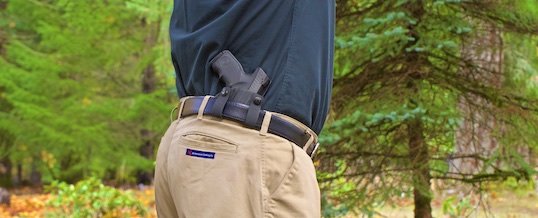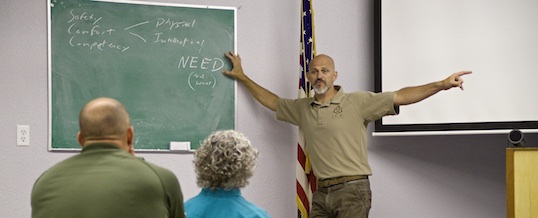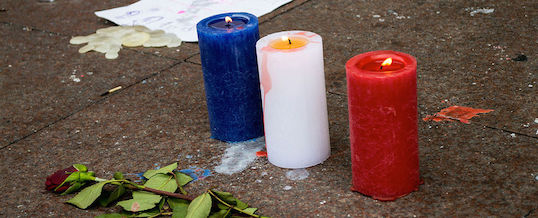
Don’t like your holster? Try changing your pants!
A new holster recently taught me something valuable about concealed carry comfort that had nothing to do with the holster — it had more to do with my pants!
I’ve been accused of being a Luddite, and to some degree I can see why people might think that. Yes, I like revolvers and lever action rifles — but I also like polymer striker fired pistols and bullpup rifles with battery-powered scopes. In essence, I like what works and if it works, I see no reason to change simply for the sake of change. If, however, there is a benefit to something new, a demonstrable advantage that is applicable to my life and the environment in which I live, then I’ll make a change.
That doesn’t mean I give up completely on what has always worked, however; I simply add the new to the old and make any resulting decisions based on the application. With that thought in mind, let me tell you about the new holster I recently purchased for a relatively new gun.
As you may be aware, my autoloading pistol of choice for some years has been the original Steyr S9. Over the years I’ve used a couple of holsters for that gun, one inside the waistband (IWB) and one outside the waistband, on the belt (OWB). Of course they were both made of leather, the traditional material for holster making. I like leather holsters because, like good leather boots, they “break in” to conform over time to the wearer’s body. This makes the gun/holster package fit very precisely and comfortably to the individual’s shape.
However, leather has disadvantages. It exerts a lot of friction on the gun, making drawing a little difficult even when well-worn. Not only does a leather holster need to break in to the wearer’s body, it requires the wearer draw and re-holster a number of times to loosen the holster’s grip on the gun. Even after breaking in, and perhaps especially after breaking in, leather makes re-holstering more difficult because the body of the holster collapses when the gun is drawn. Even the best holsters with the best reinforced mouth will always collapse a little, requiring more force to insert the gun.
This became abundantly clear recently when I purchased a new Steyr S9-A1, the improved and modernized version of my old S9. Since the shape of the frame changed considerably from the original S9, and holsters were not at all interchangeable, I needed a new holster. Naturally I ordered a leather holster since that’s what I’ve always done, but I also decided to take a cue from all the “cool kids” and get one of “them fancy new” Kydex rigs.
Now I’ve owned some hybrid Kydex and leather rigs from Crossbreed Holsters, and I’ve played with a Kydex appendix-carry holster from Phlster for the S&W “J” frame, but this was my first real, daily carry holster that I was going to use for my personal daily carry autoloading pistol. I’d heard about comfort issues with the unyielding hard plastic but decided that they couldn’t be all that bad if so many people were using them. (That’s a specious form of reasoning, mind you, but that’s what I told myself.)
I ordered up a standard IWB design from Blade-Tech called the Nano; I picked them because they’ve been in the business a long time and because I know Tim Wegner, the founder of the company. That, and they make a holster for the sometimes hard-to-fit Steyr pistols!
It arrived and I put it on. I immediately liked how it retained the gun yet allowed a very smooth draw, and I especially liked how it allowed easy, sure and safe re-holstering. I began to see why these newfangled plastic holsters were so popular, and why fewer people were using dead animal skins to hold their guns.
Then the pain started.
Those hard edges and corners, even though nicely rounded and finished, dug into my tender flesh and caused intense agony. After a week of that torture I finally gave up and put on the leather holster, making myself simultaneously more comfortable yet more annoyed. There had to be a solution, I thought.
Now I’ve always preached to new concealed carriers the need to find the right position for their holster in order to achieve comfort. As little as 1/4” forward or back or a few degrees change in cant (angle) can make all the difference in holster comfort. As it happens, the forgiving nature of leather eventually results in an acceptable fit no matter what a person does; not so, I discovered, with unchanging Kydex.
No matter where I placed the holster it always hurt — a lot. I experimented with cant and position till I was blue in the face (and in the bruises on my torso) but never found a comfortable position for the vile contraption.
Until the day I bought new pants.
Understand that I’m a big fan of wearing the same clothing, in the same color scheme, all the time; it makes shopping easier and reduces decision making when getting dressed in the morning. When I find clothes I like, I usually buy a bunch of duplicates and store them for future replacements. For years I’ve been wearing Riggs Ranger pants, which are cargo pants in Wrangler’s work clothing line. Times change, though, and as I was running low on my backstock of those pants I was simultaneously getting tired of the tough guy cargo look when out in public. (That, and the Tactical Timmy crowd had discovered that the Riggs pants were more durable and less costly than the usual warrior-approved brands; as a result I was looking more and more like the people I was trying hard not to look like.)
I decided to adopt a significantly softer look and bought some suitable candidates from a couple of makers. One was the All American Clothing Company, whose clothes are actually all made here in the U.S. Their Casual Pant had the right look and the right features (I need a separate cell phone pocket!) and were priced reasonably, especially considering where they’re made.
When they arrived I noticed that the waistaband rode just slightly lower than the Riggs Rangers I was used to. Not “low riding”, mind you, just not quite up to the ride height of the Riggs. I discovered, though, that when I put them on with my Kydex-holstered Steyr pistol the pain I’d formerly experienced was gone — completely!
That slight change in ride height, which was on the order of perhaps 3/8”, was just enough to put the holster into a sweet spot where it rode perfectly. It’s hard to express how profound the change was; that holster/gun combination went from masochistic to nearly unnoticeable in an instant. That holster and gun are now among the most comfortable concealed carry (CCW) rigs I’ve ever owned.
And all it took was a different pair of pants!
As I said above, small changes in gun position will make all the difference in your concealed carry comfort. If you find that you can’t get the gun into a comfortable spot, try changing your clothes. A different pair of pants with a different fit, including where the waistband rides, might be enough to eliminate your complaints too.
You’d think that with my years of experience in carrying a concealed handgun this wouldn’t be a surprise, but I’ll sheepishly admit that it was. Now if you’ll excuse me, I have to order up some backup pants from All American Clothing. Don’t want to make any more decisions in the morning than I have to!
– Grant Cunningham
P.S.: Have you checked out my new book, Handgun Training: Practice Drills For Defensive Shooting? It’s my guide to practicing your skills realistically through carefully devised and thoroughly explained range drills. From simple to complex, this book will give you ways to practice that actually build relevant, plausible defensive shooting skills — and explains the how and why behind each one. I think you’ll find it a valuable and very unique addition to your training library!
- Posted by Grant Cunningham
- On November 16, 2015



